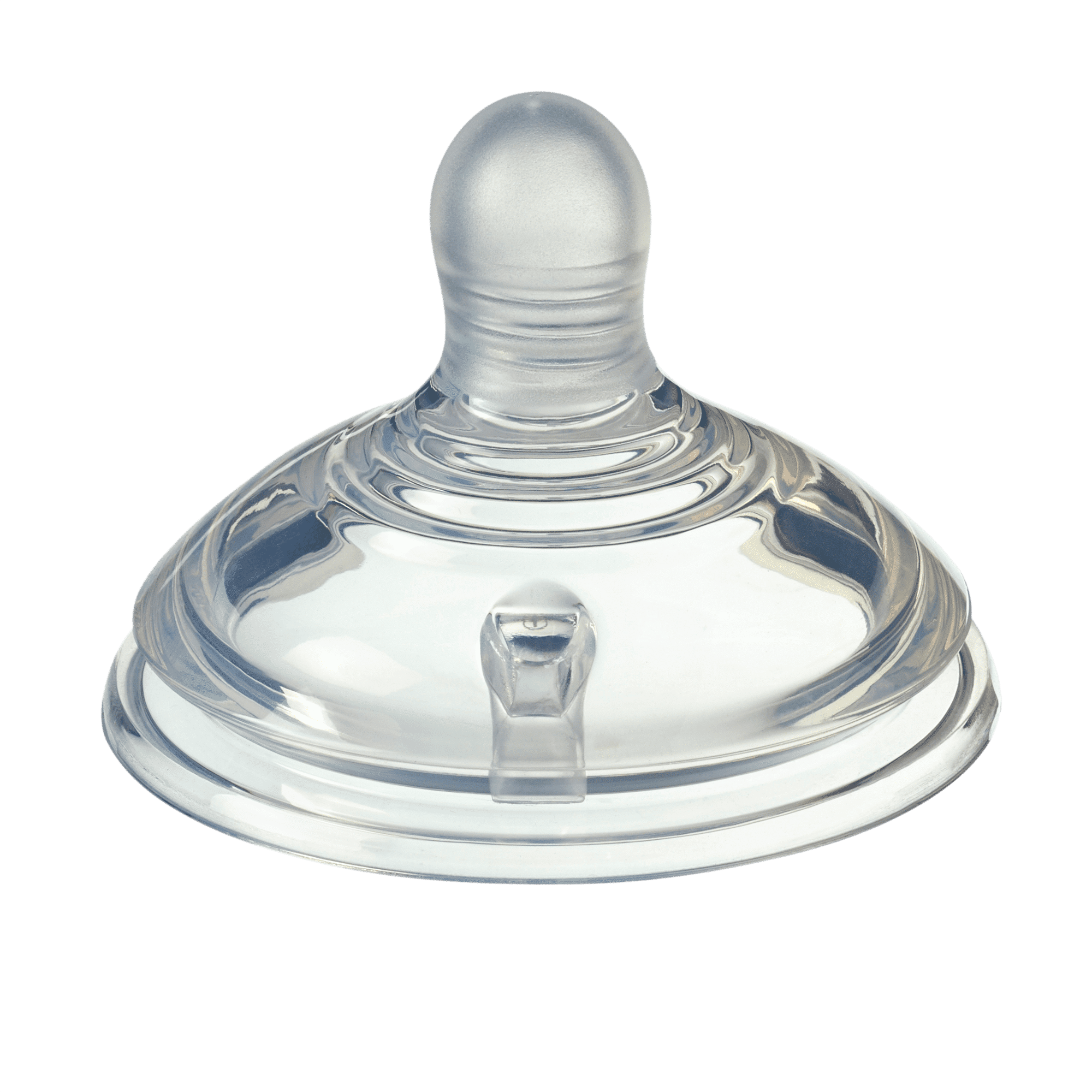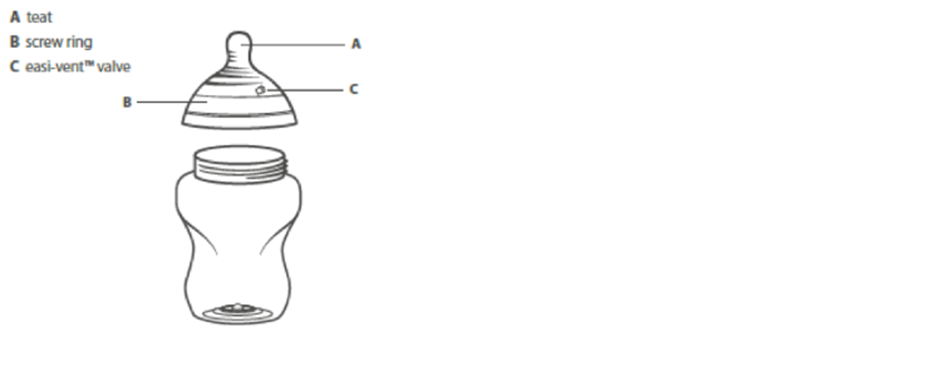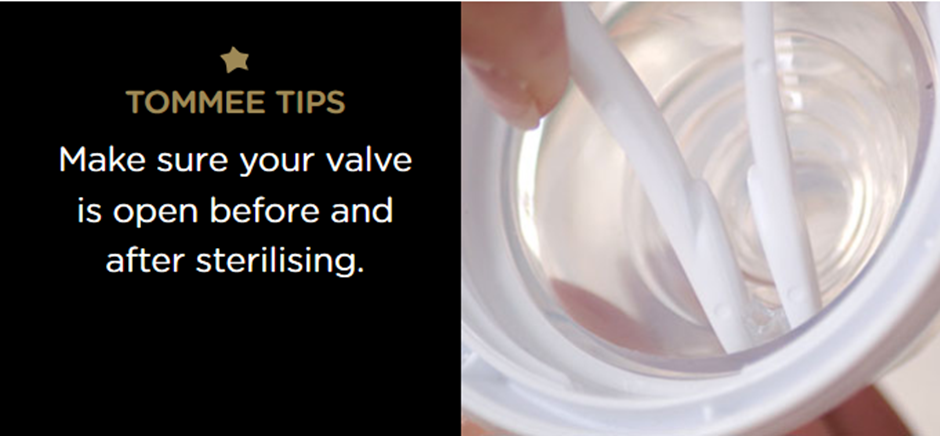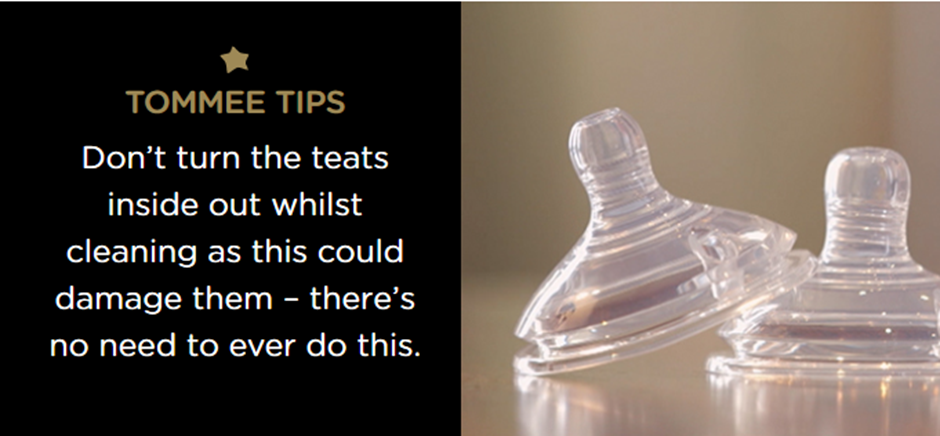Stuck on how to use one of our products?
Not sure how to clean them?
Find all the useful support information right here.

Getting Started
Great to see that you’ve purchased our Advanced Anti-Colic Bottle Teats. To help you get started and to keep your product working effectively, we’ve added all the guidance you should need within this area, as well as some handy hints and tips and troubleshooting advice.
Can I put bottles and teats in the dishwasher?
Of course! Pop them on the top shelf though. As with all white and clear plastic things they can get a bit stained and yucky-looking in the dishwasher (blame that bolognese sauce or carrot soup you had last night). If they do get discoloured there's nothing to worry about - they're perfectly safe, they just don't look as inviting!
Why is my teat collapsing when my baby is feeding?
The Advanced Anti-Colic Teat's round dome valve, which fits onto the bottom of the venting tube is very sensitive as it is made of specially designed silicone material. This can sometimes stick together when not used for periods of time or before first use. To ensure the slit in the dome valve is open you should wash all parts in warm soapy water, rinse in clean water and sterilise.
Reassemble your bottle as per the instructions. When assembling your bottle it is important that you check the valve at the base of the stem by holding it to the light to check that the slit in the silicone has not sealed closed. If it has sealed closed, pull apart gently between your fingers to re-open. If the valve has sealed closed your bottle will not vent properly.
When will my baby be ready for a faster teat?
There's no single answer to this as every baby is totally different. We do a medium flow teat which most babies are ready for at around 3 months, and a fast flow teat which is usually best from around 6 months. Another option is to consider our variflow teats which have an X cut at the end so your baby can dictate flow rate. Most babies will let you know in their own way when they're ready to feed more quickly.
How long do teats last?
Our bottles will last as long as your baby needs them but teats take a little more hammering and should be changed regularly. We suggest to switch your teats for new ones every 2-months.
Can I use Closer to Nature Teats on Advanced Anti-Colic Bottles?
The simple answer is no, and we’re really sorry about that. Most of our products are made with interchangeable parts to make life as simple as possible. But the Easi-Vent teats have a built-in air valve, and wouldn’t work properly on our Anti-Colic Bottles.
Getting Started
Great to see that you’ve purchased our Closer to Nature bottles. To help you get started and to keep your product working effectively, we’ve added all the guidance you should need within this area, as well as some handy hints and tips and troubleshooting advice.
PARTS GUIDE
A step by step guide to how the teats attach to your Closer to Nature bottles.

QUICK START
Before you use your bottles for the first time, please:


How to use Tommee Tippee Baby Bottles
*Inspect before each use and pull the feeding teat in all directions
** For safety and hygiene reasons it’s recommended that the feeding teat is replaced every 2-months or sooner if damage or weakness is noticed
Where should the valve be when I'm feeding my baby?
The valve will work wherever it’s positioned but the best place for the valve is at the top, near your baby's nose.
Closer to Nature teats look the same, can I use them on Advanced Anti-Colic bottles?
No, you can’t use Closer to Nature teats on Advanced Anti-Colic bottles. Closer to Nature teats have a built-in air valve, and don’t work with our Advanced Anti Colic bottles. The valve in your Advanced Anti Colic bottles is situated inside the bottle, attached to the end of the venting tube and is shaped like a star. It’s important that you make sure you match the right teat to the right bottle.
How long do teats last?
Teats take quite a lot of hammering from little gums and teeth, so they need to be changed regularly. We recommend replacing teats every 2-months or at the first sign of any damage or weakness.
Can I buy bottles with faster flowing teats?
All of our bottles except the 340ml version currently come with slow flow teats as standard, as they’re best for newborns and most parents generally stock up on bottles before baby arrives. Our 340ml bottle comes with a medium flow teat.
As your baby grows and can feed more quickly, you can buy faster flowing replacement teats.
We have medium flow teats, which most babies are ready for at around 3 months, and a fast flow teat which is best from around 6 months. The ages are only guides though - you know your baby better than anyone and will be able to tell when they’re ready for a faster flow.
Cleaning & Maintenance
DOS
DON'TS
WARNINGS
FOR YOUR CHILDS SAFETY & HEALTH WARNING!
Is it ok to put bottles in the dishwasher?
Of course! Pop them on the top shelf though. As with all white and clear plastic things they can get a bit stained and yucky-looking in the dishwasher (blame that Bolognese sauce or carrot soup you had last night). If they do get discoloured there’s nothing to worry about - they’re perfectly safe, they just don’t look as nice.
Troubleshooting
The teat is collapsing during a feed – Why?
If the bottle teat collapses during feeding, it takes longer than 20 minutes for baby to finish a bottle, or if baby tugs at the teat or baby falls asleep mid-bottle, these are potential signs you may need to increase the teat flow rate.
My teats looks stained - What's happened / Are they safe?
As with other things around the kitchen, they can get a bit stained and yucky-looking in the dishwasher or even when you hand wash them (blame that Bolognese sauce or carrot soup you had last night).
Cloudy looking teats generally occur as a result of strong cold-water sterilisation. Cold water sterilisation is perfectly fine, but if you’ve gone a bit over the top with the sterilisation solution (it’s easily done!), it can impact the colour.
Don’t worry though, as the teats are still perfectly safe to use, they just look a little different to the norm.
My teats don't seem to last very long?
Teats take quite a lot of hammering from little gums and teeth, so they need to be changed regularly. We recommend replacing teats every 2-months or at the first sign of any damage or weakness.